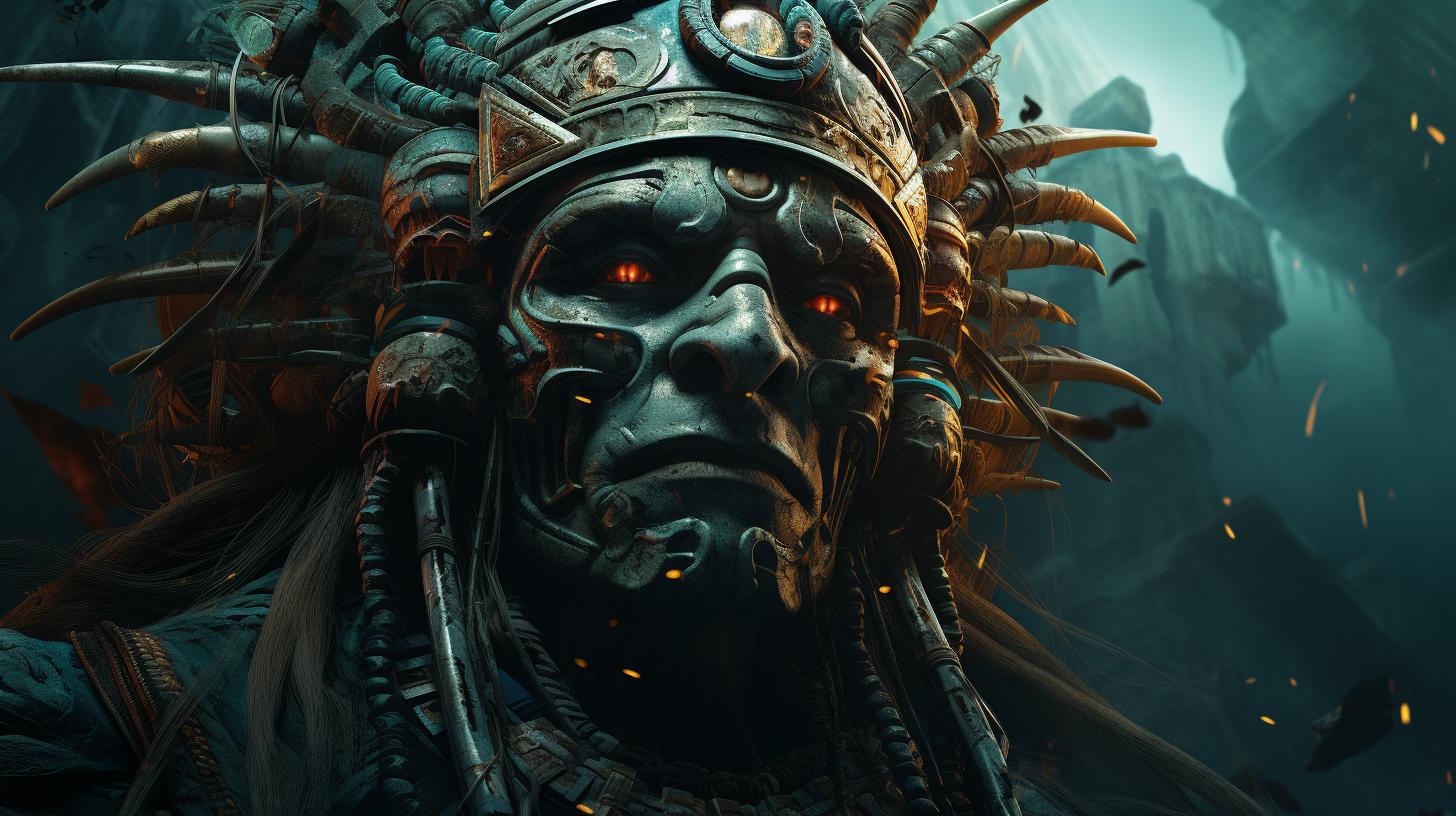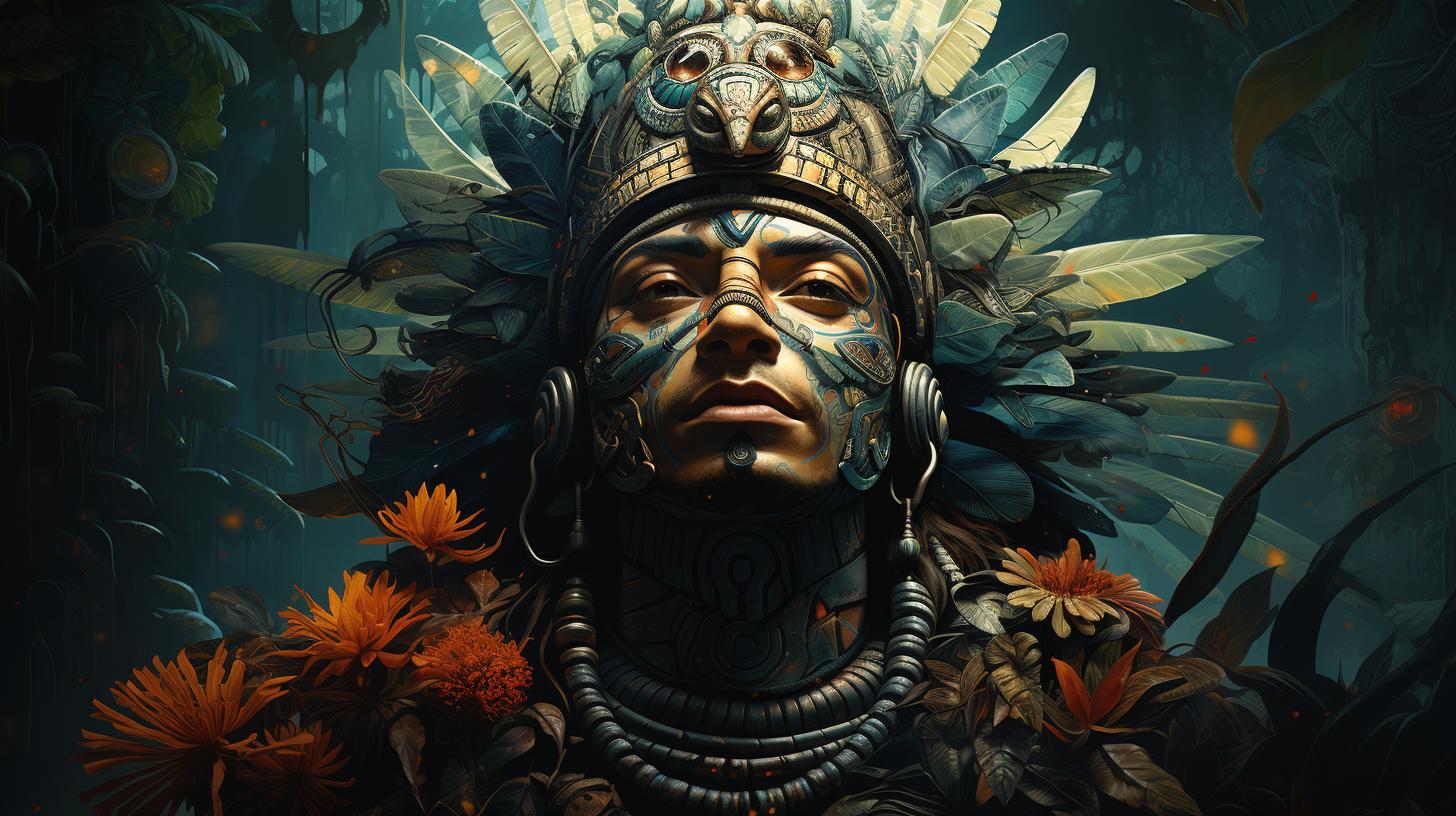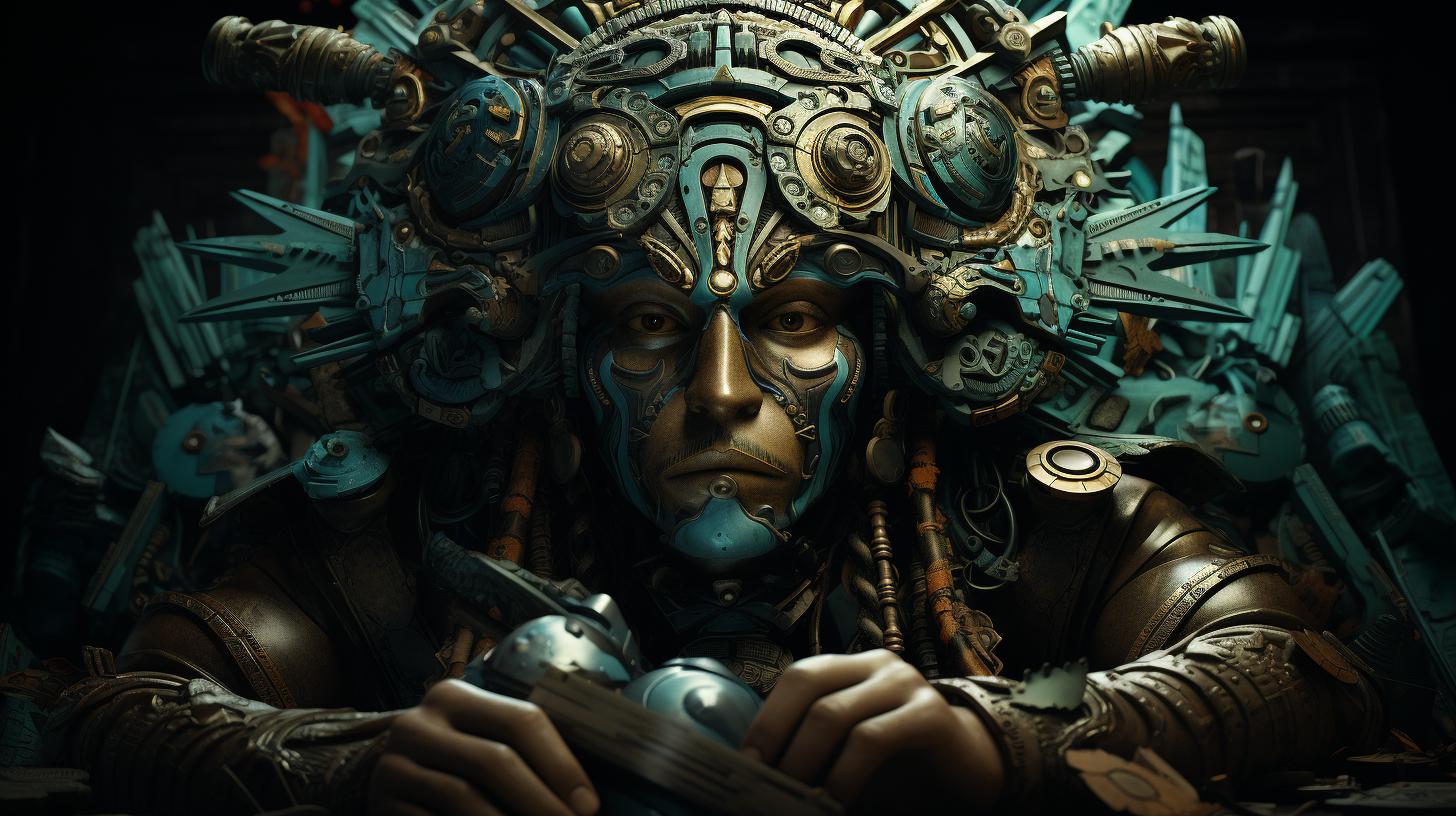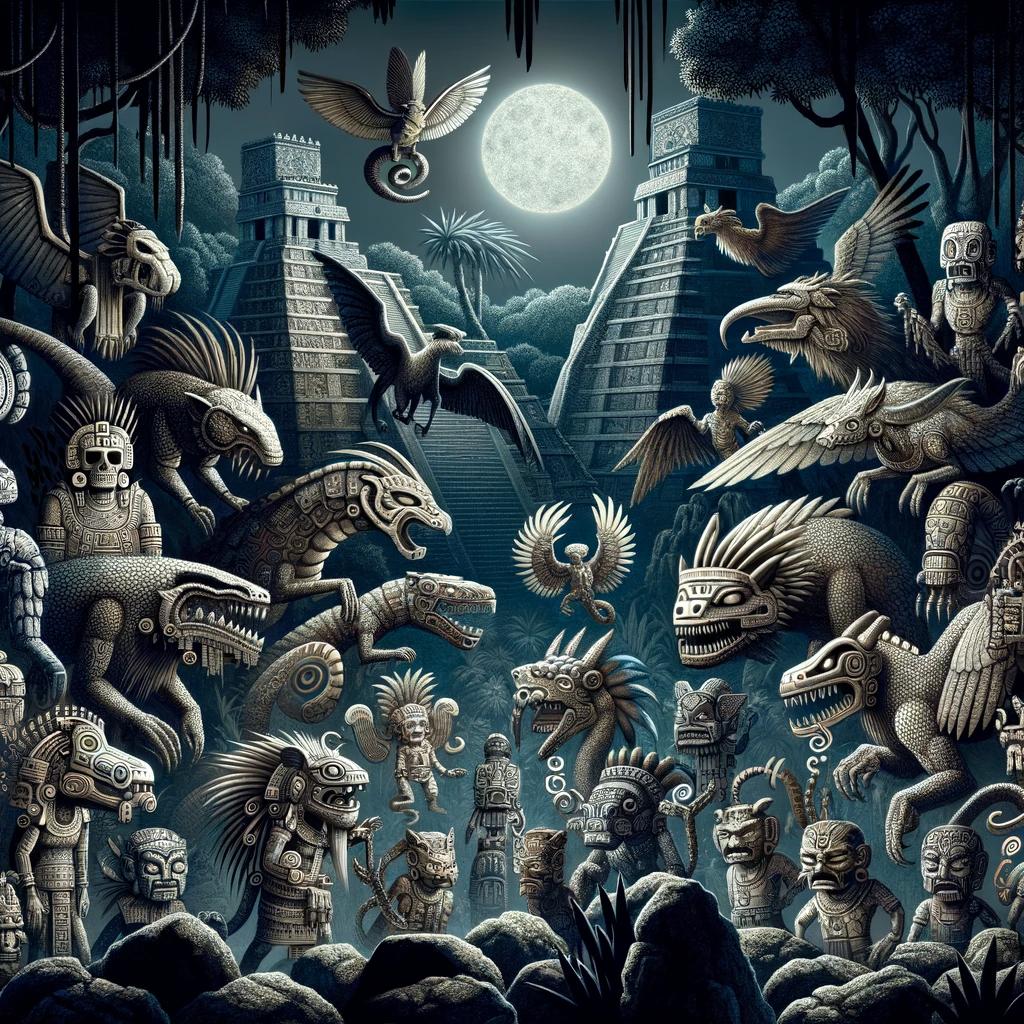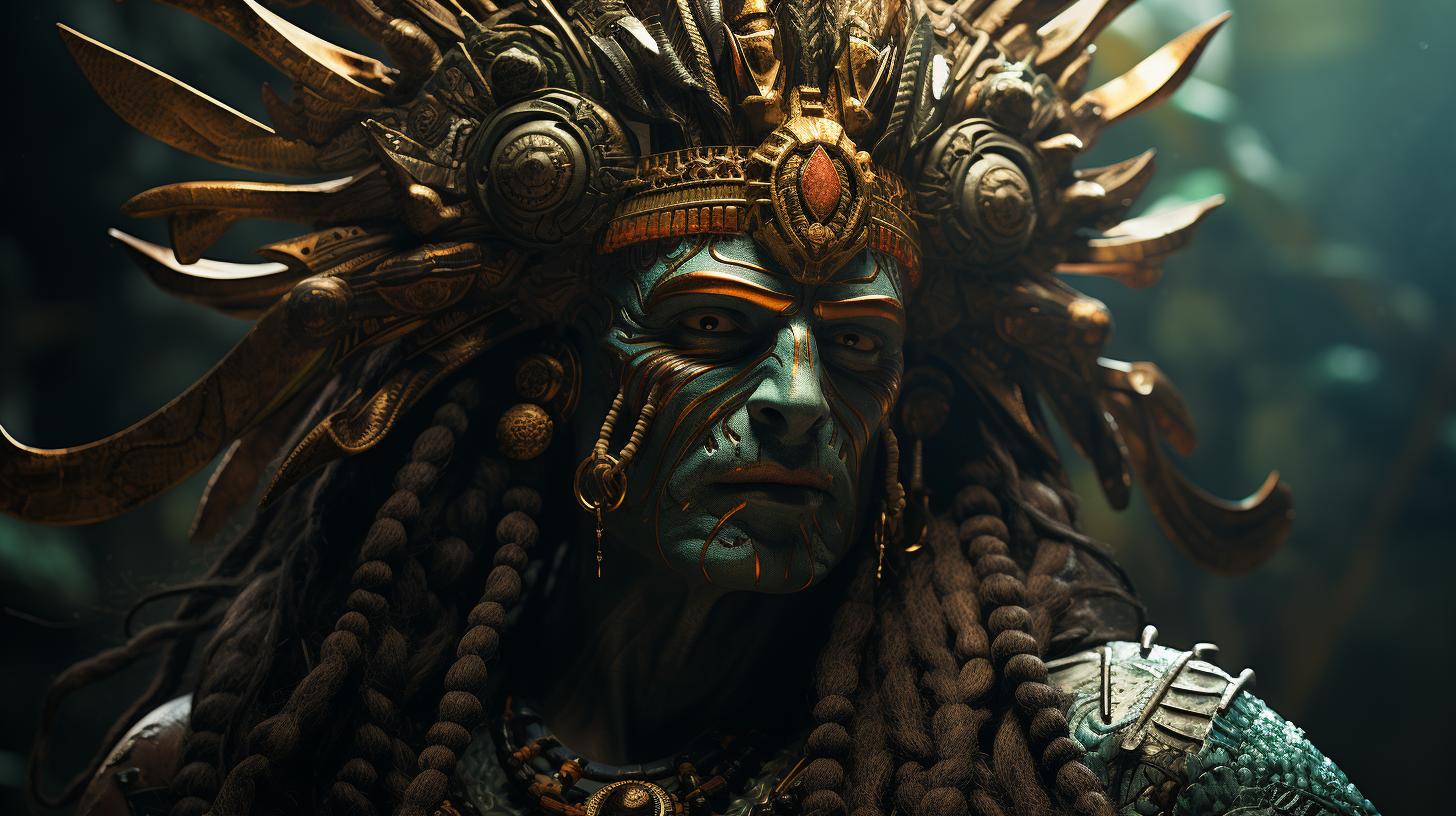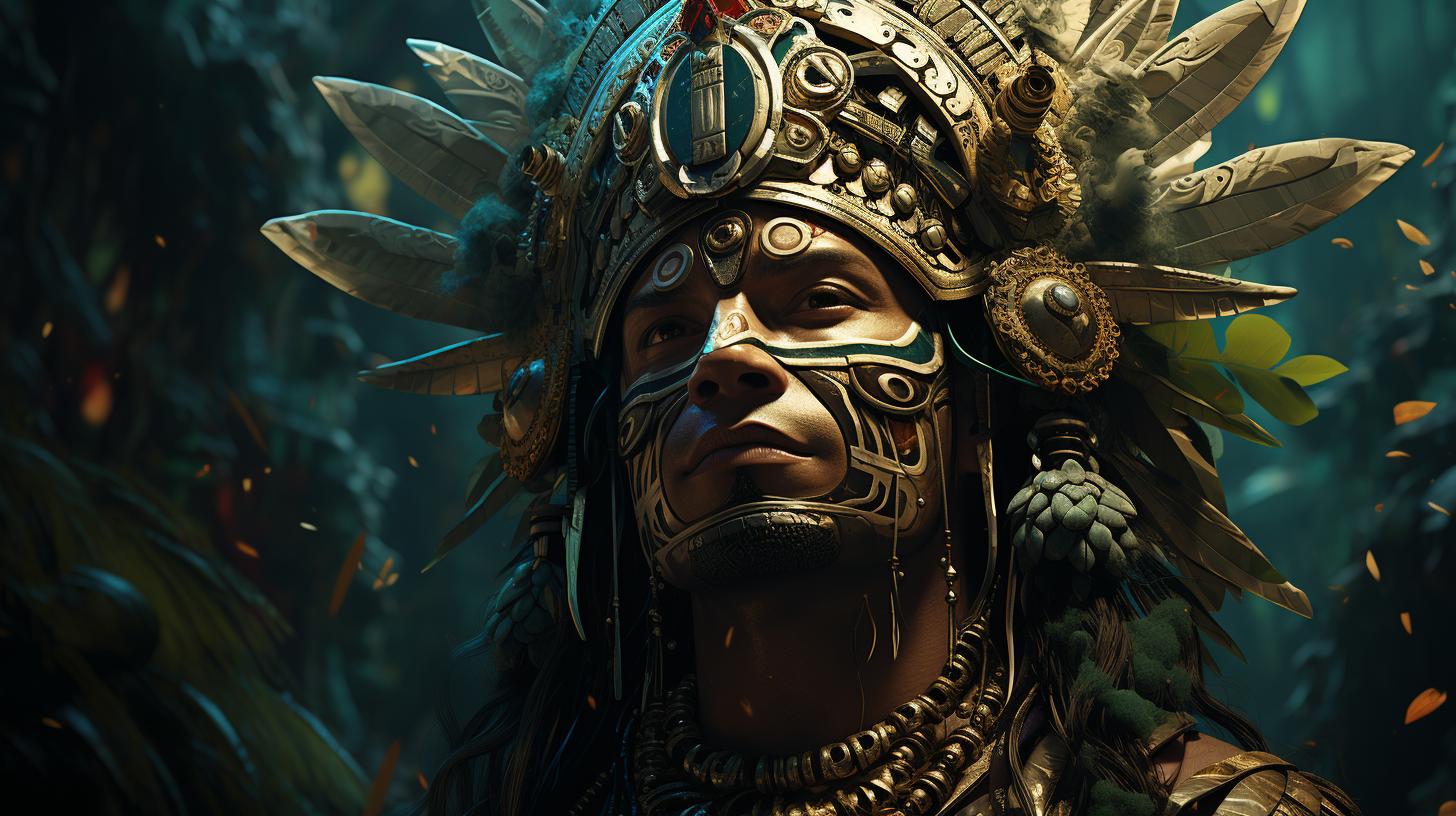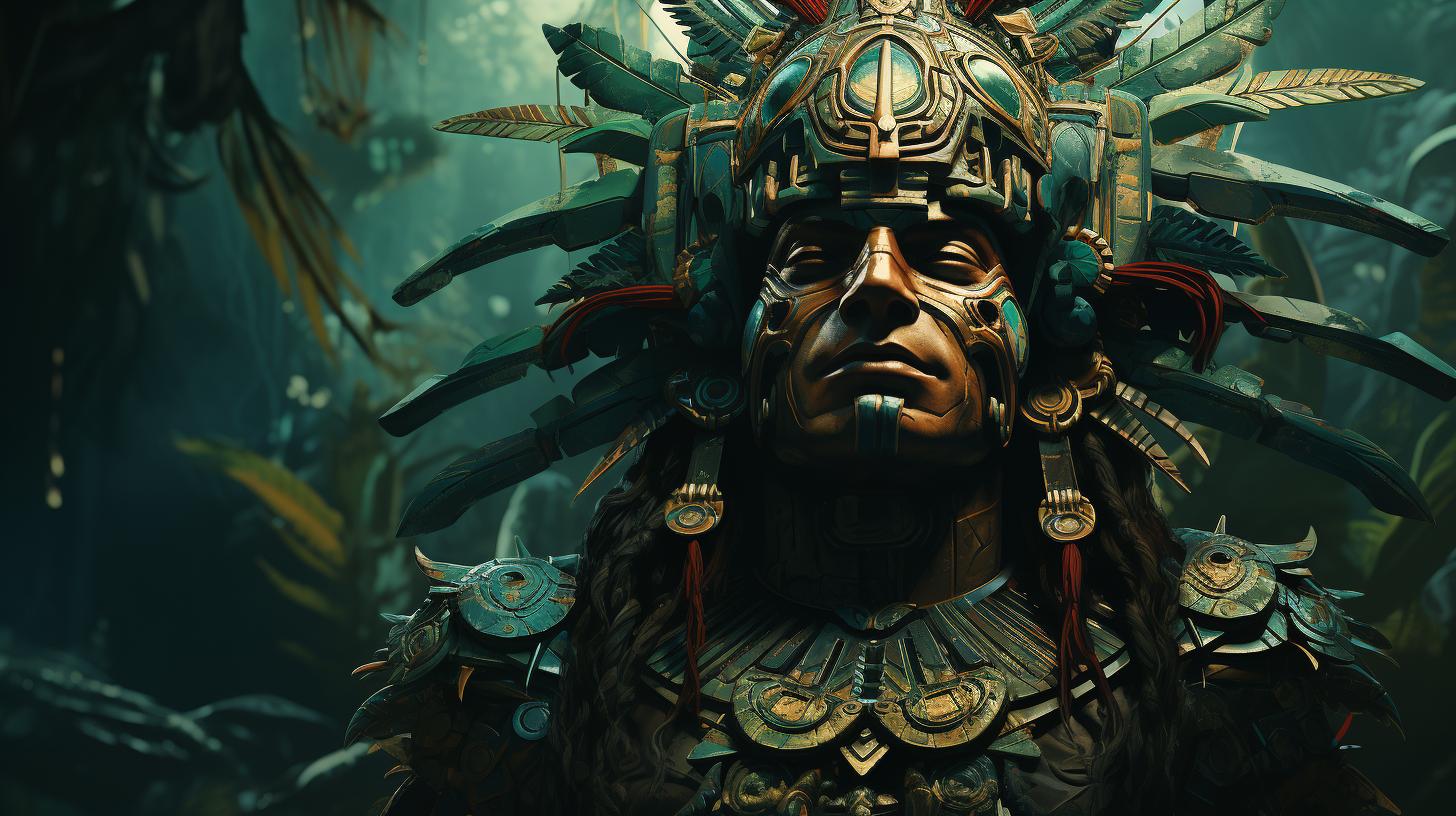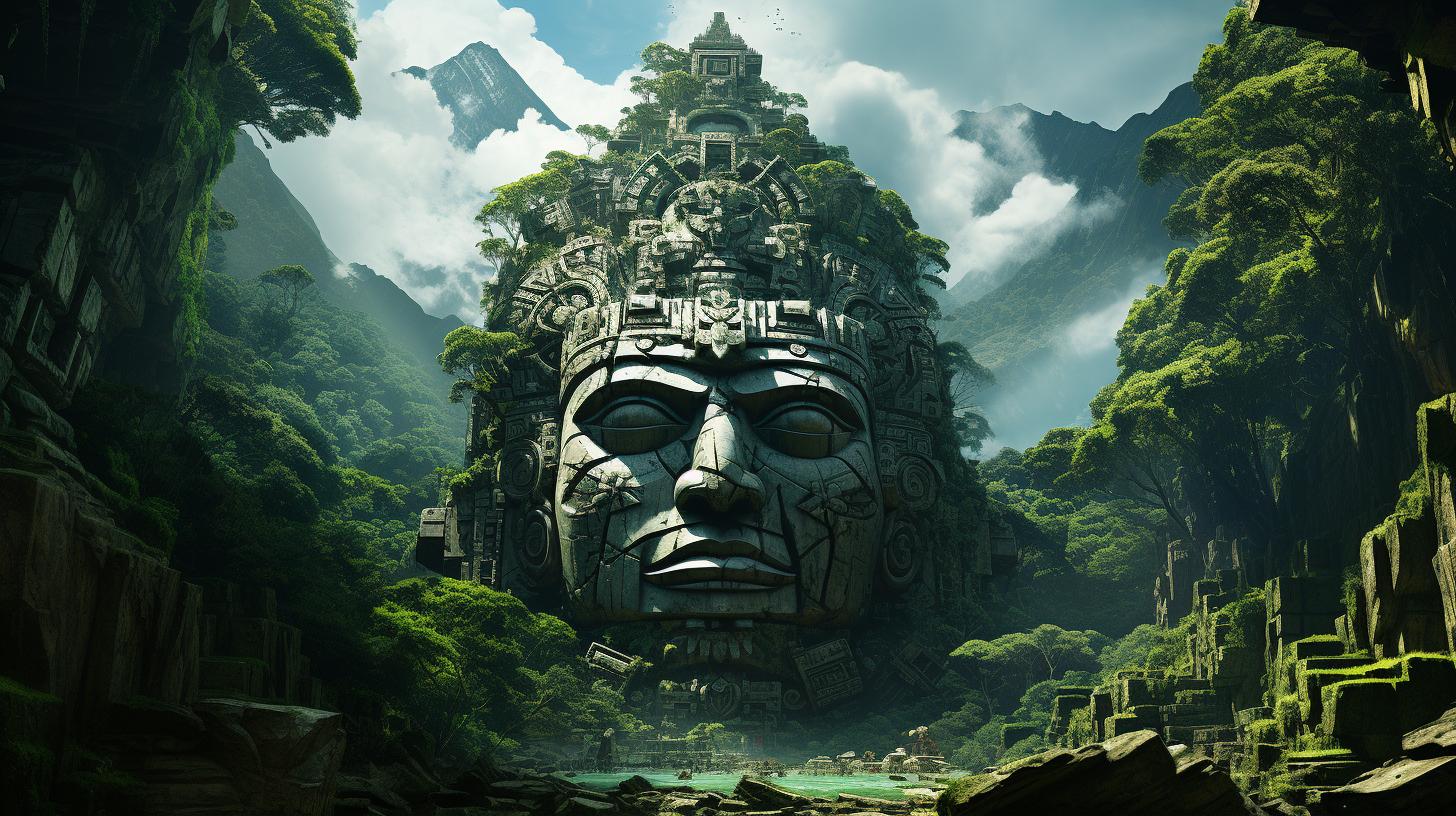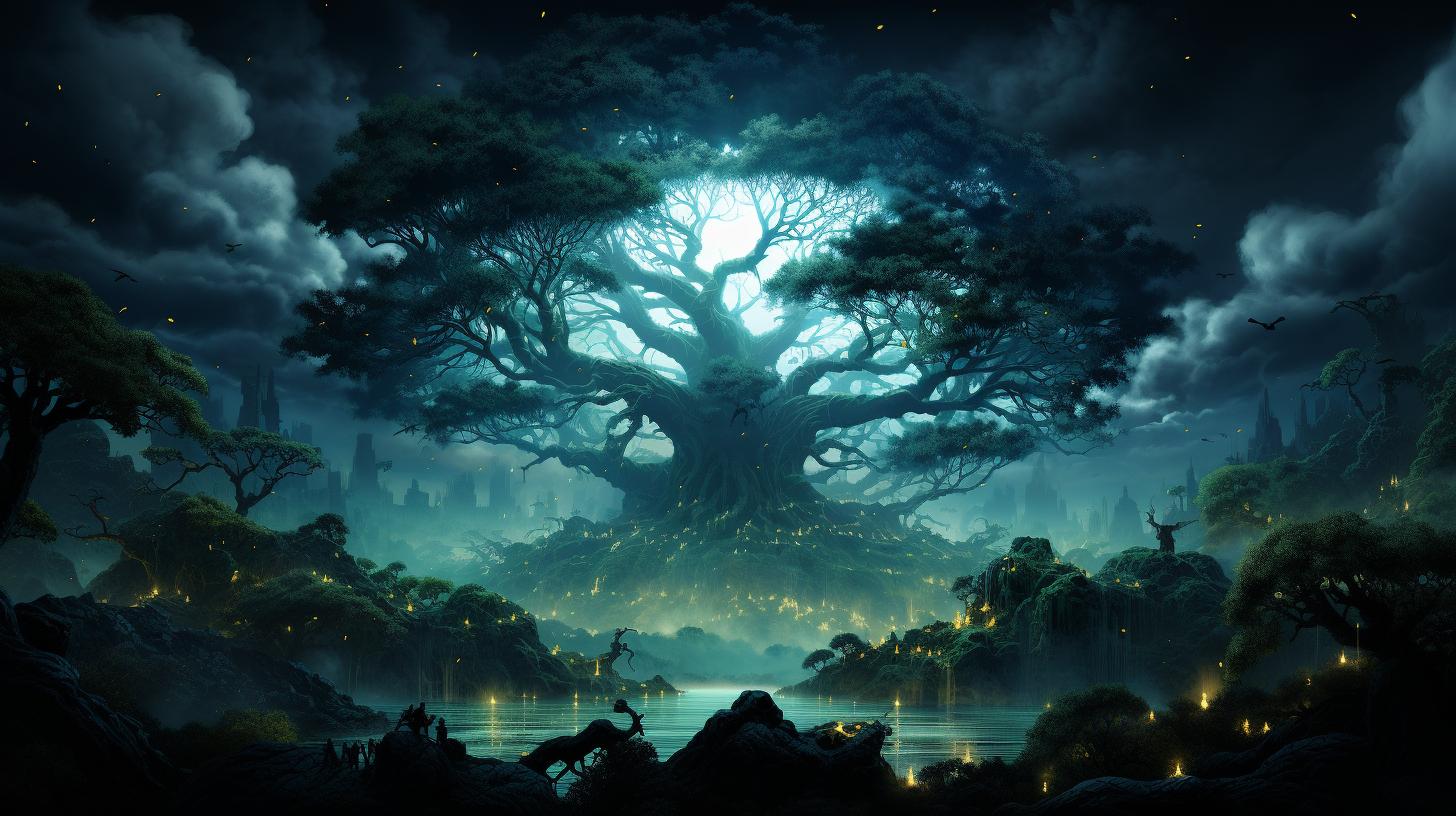Discover the Mysteries of Mayan God Cizin: The Powerful Deity of Death and Earthquakes
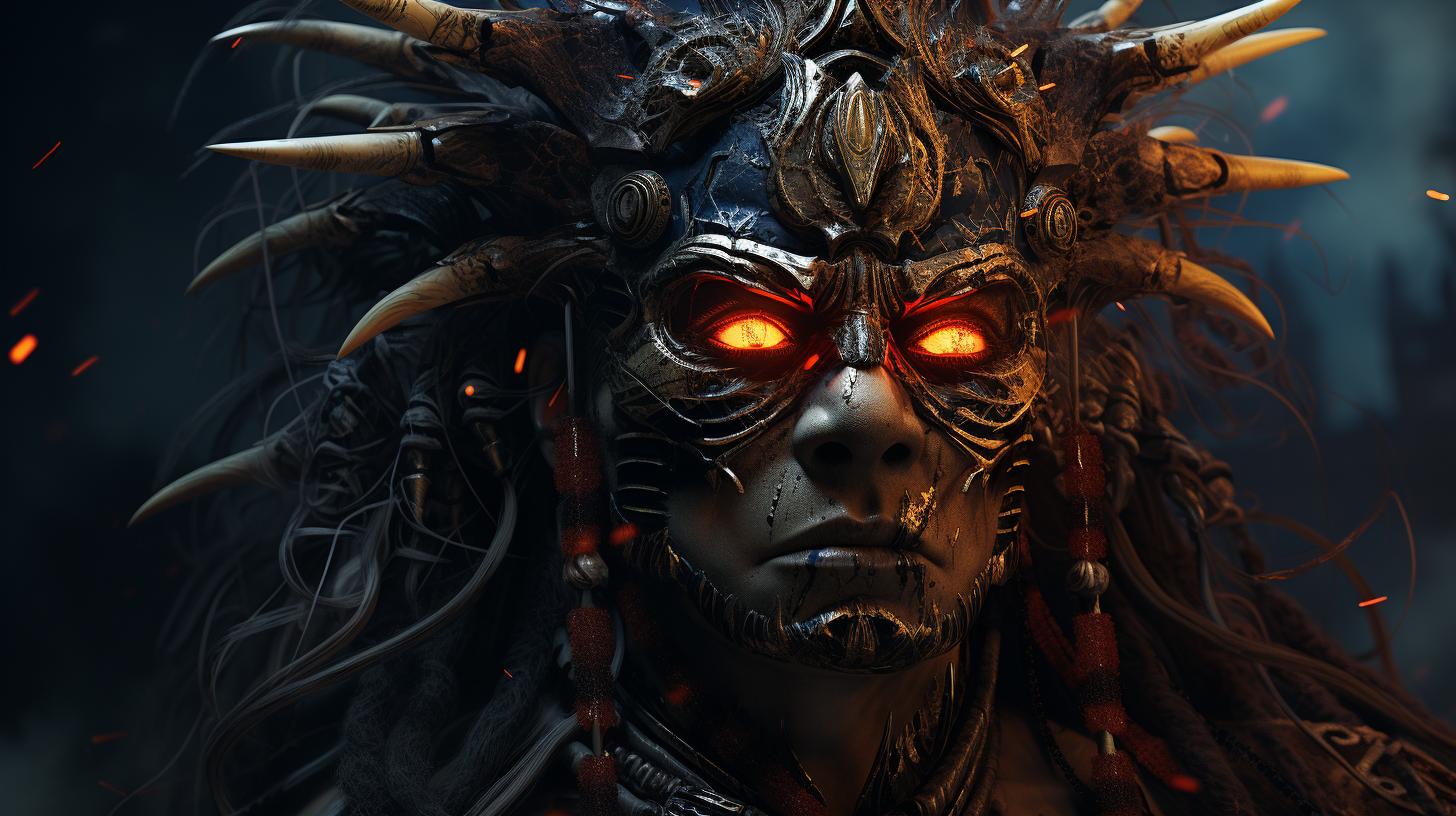
Mayan god Cizin, also known as Ah Puch, is a significant deity in Mayan culture, revered as the god of death and associated with earthquakes. Represented in ancient Mayan codices and ceramics as a dancing skeleton holding a lit cigar, Cizin’s prominent features include a death collar with dismembered eyes and jewelry on the wrists and ankles.
This powerful deity is often depicted alongside the god of war in scenes of human sacrifices, showcasing the complex religious beliefs and rituals of the Mayan civilization.
The Mayan Pantheon: Exploring the Deities of the Ancient Maya Civilization
The ancient Maya civilization had a rich and complex pantheon of gods and goddesses, each with their own unique powers and attributes.
One prominent deity in this pantheon is the Mayan god Cizin, a figure associated with death and earthquakes.
Mayan God Cizin: A Deity of Death and Earthquakes
Cizin, often referred to as the god of death, holds a significant place in Mayan mythology. This powerful deity is believed to govern over the realm of the dead and is closely associated with earthquakes and natural disasters.
The Mayans revered Cizin as one of the most important gods, recognizing his role in the cycle of life and death.
The Many Names and Representations of Cizin
Cizin, also known by various other names such as Ah Puch, Xibalba, and Yum Cimil, has different representations across Mayan art and literature. Artists depicted Cizin as a dancing skeleton, often seen holding a lit cigar.
One of his most prominent features is a death collar, composed of dismembered eyes hanging from nerves. Additionally, he wears jewelry on his wrists and ankles, with a distinct scent associated with death.
Stay tuned for the next sections of the article, which will delve deeper into the mythology and beliefs surrounding the Mayan god Cizin, exploring his role in Mayan culture and rituals, as well as his relationship with other deities in the pantheon.
Mythology and Beliefs of the Mayan God Cizin
The mythology surrounding the Mayan god Cizin is rich and multifaceted, offering insights into the beliefs and religious practices of the ancient Maya civilization.
Cizin’s Role as the God of Death in Mayan Religion
Cizin holds a prominent place among the gods of death in Mayan religion.
He is revered as the most important deity associated with death and is believed to have power over the souls of the deceased. Cizin’s role is not only confined to overseeing the journey of the souls to the underworld but also encompasses judgment and the administration of punishment to the wicked.
Cizin’s Association with Earthquakes and Natural Disasters
In addition to his role as the god of death, Cizin is closely associated with earthquakes and natural disasters. The ancient Maya believed that Cizin had the power to cause earthquakes, which they perceived as a manifestation of his divine wrath.
They saw these catastrophic events as a means for Cizin to communicate his displeasure or to assert his authority.
Depictions and Symbols of Cizin in Ancient Mayan Artifacts
Throughout ancient Mayan artifacts such as ceramic vessels and codices, Cizin is depicted in various forms that reflect his complex nature. One of his prominent representations is that of a dancing skeleton holding a lit cigar.
Another distinguishing feature is his death collar adorned with dismembered eyes hanging from their nerves. Cizin is often portrayed wearing jewelry on his wrists and ankles, and a distinct aura of death surrounds him.
Artifacts also reveal the association of Cizin with other elements, such as vultures, owls, bats, and arachnids, which are often depicted alongside him. These symbols and depictions offer valuable insights into the Mayan beliefs and rituals surrounding death and the underworld.
Cizin in Mayan Culture and Rituals
Cizin, the Mayan god of death and earthquakes, played a significant role in Mayan culture and rituals. This section explores Cizin’s connection to sacrifices and the underworld, his relationship with other Mayan gods, and his lasting legacy in modern Mayan traditions and cultural influences.
Cizin’s Connection to Sacrifices and the Underworld
In Mayan culture, Cizin was closely associated with sacrifices and the underworld. As the god of death, he was believed to receive offerings and sacrifices to appease him. These rituals were performed to ensure the continuation of life and to maintain harmony with the spirits.
Cizin’s presence in sacrificial ceremonies highlights the profound significance of death in Mayan belief systems.
Cizin’s Relationship with Other Mayan Gods, such as the God of War
Cizin’s role as the god of death intertwined with other deities in the Mayan pantheon. Notably, he was often depicted alongside the god of war in scenes of human sacrifices.
This representation symbolized the connection between life and death, as wars and battles were believed to provide the necessary souls for Cizin. The relationship between Cizin and other gods exemplifies the complex interplay of different aspects of Mayan mythology.
The Legacy of Cizin in Modern Mayan Traditions and Cultural Influences
Despite the influence of colonialism and the merging of Cizin with Christian beliefs, the legacy of this ancient Mayan god continues to shape modern Mayan traditions and cultural practices. Cizin’s association with death, sacrifice, and the underworld remains present in various rituals and ceremonies.
Additionally, his representations in art, literature, and popular culture further contribute to the preservation and dissemination of Mayan mythology.
.

